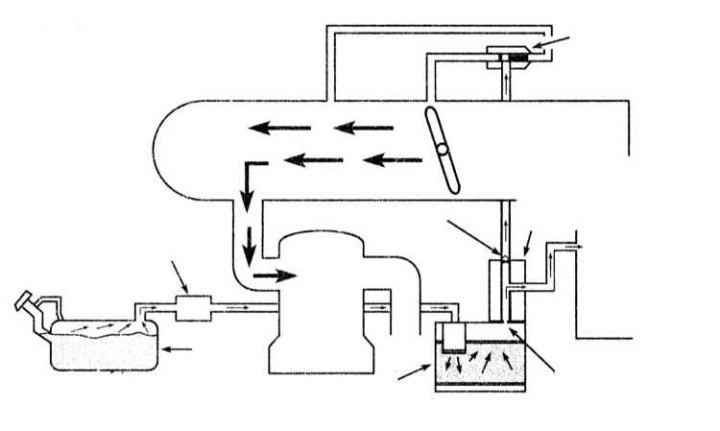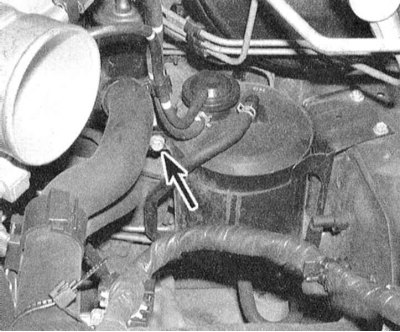General information

The EVAP system accumulates fuel vapors accumulated in the power supply system while the vehicle is parked and ensures that they are discharged into the intake tract for combustion during the normal operation of the engine. Any EVAP system necessarily includes a special adsorber filled with activated carbon, which, in fact, collects fuel vapors. The adsorber is connected by tubes to the fuel tank, in addition, the design of the system provides the possibility of supplying vacuum to the adsorber from the engine inlet port and the inlet pipeline
When the engine is turned off, the fuel vapors accumulated in the gas tank, throttle body and intake piping are discharged through the connecting pipes to the carbon adsorber, where they are stored until the engine is started. When the engine is started, the adsorber is purged and the vapor accumulated in it is discharged into the intake tract, from where it enters the combustion chambers.
On models 1993 and 1994 and on 1995 models subject to federal regulations, the purge control vacuum switch valve is mounted on top of the canister. On 1995 California models, no. and all models since 1996 vol. an electronic canister purge control valve is used, triggered by the PCM command. The electronic control system also includes a shut-off valve that allows you to stop the adsorber purge at idle and during engine braking.
Examination
1. Faulty operation of the purge control valve, as well as mechanical damage to the carbon adsorber or connecting lines, leads to a violation of the stability of the idle speed, spontaneous engine shutdowns and a decrease in the efficiency of its return.
2. With increased fuel consumption, as well as with the appearance of a distinct smell of gasoline penetrating into the car, you should first check the condition of the fuel lines. Make sure that there are no signs of mechanical damage to the adsorber.
3. Check up a condition of the hoses brought to an adsorber. Make the necessary replacements.
4. Cracked adsorber replace (see below).
5. Make sure there are no signs of leaks under the carbon adsorber. If necessary, replace the failed assembly. track the correct connection and laying of hoses.
Replacing the carbon adsorber
All models 1993 and 1994 issue and federal models 1995 vol.
1. Carefully mark and disconnect all vacuum hoses connected to the adsorber.

2. Turn out fixing bolts and remove an adsorber from a basic arm.
3. Installation is carried out in the reverse order.
California Models 1995 vol. and all models since 1996 vol.
Note. On these models, the EVAP charcoal canister is located on the left side of the vehicle, behind the fuel tank.
1. Jack up the car and put it on stands.
2. Carefully mark and disconnect all vacuum lines from the adsorber.
3. Turn out fixing bolts and remove an adsorber.
4. Installation is carried out in the reverse order.